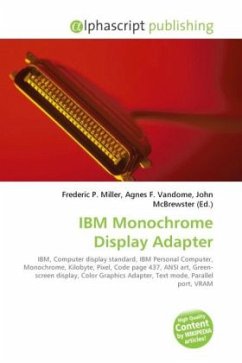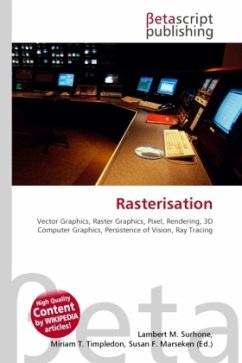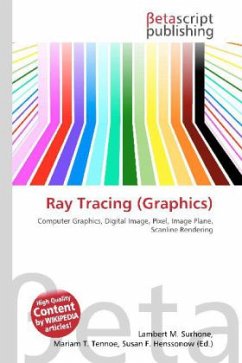
IBM Monochrome Display Adapter
Versandkostenfrei!
Versandfertig in 6-10 Tagen
23,99 €
inkl. MwSt.

PAYBACK Punkte
12 °P sammeln!
The Monochrome Display Adapter (MDA, also MDA card, Monochrome Display and Printer Adapter, MDPA) introduced in 1981 was IBM's standard video display card and computer display standard for the PC. The MDA did not have any graphics mode of any kind; it only featured a single monochrome text mode (PC video mode 7), which could display 80 columns by 25 lines of high resolution text characters. The standard IBM MDA card was equipped with 4 kilobytes of video memory. The MDA's high character resolution (sharpness) was a feature meant to facilitate business and wordprocessing use: Each character was...
The Monochrome Display Adapter (MDA, also MDA card, Monochrome Display and Printer Adapter, MDPA) introduced in 1981 was IBM's standard video display card and computer display standard for the PC. The MDA did not have any graphics mode of any kind; it only featured a single monochrome text mode (PC video mode 7), which could display 80 columns by 25 lines of high resolution text characters. The standard IBM MDA card was equipped with 4 kilobytes of video memory. The MDA's high character resolution (sharpness) was a feature meant to facilitate business and wordprocessing use: Each character was rendered in a box of 9×14 pixels, of which 7×11 made out the character itself (the other pixels being used for space between character columns and lines). Some characters, such as the lowercase "m", were rendered 8 pixels across. The MDA featured the following character display attributes: invisible, underline, normal, bright (bold), reverse video, and blinking; some of these attributes could be combined, so that e.g., bright, underlined text could be produced. The theoretical total screen resolution of the MDA was 720×350 pixels.












